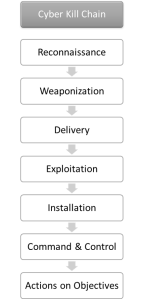26 November 2017
Section Exploited Vulnerabilities of the Recorded Future Cyber Daily is sometimes really frightening. On November 9th, 2017, 249 successful exploits of CVE-2012-1823, a vulnerability in PHP, were recorded. This is hard to believe because CVE-2012-1823 was published on May 11th, 2012. Although a patch was available at the date of publication, it seems that the operators of this systems were not able to implement them within the past five years.
However, it would have been of urgent need in this case. CVE-2012-1823 is a so-called RCE (Remote Code Execution) vulnerability, which allows remote attackers to execute arbitrary code on a victim’s computer, and, in the worst case, to hijack the victim’s network.
RCE vulnerabilities are included in the critical vulnerabilities. Critical vulnerabilities are
- exploitable from the network
- need only low or medium skills to exploit
- need no authentication
- cause great damage, have high severity
- allow remote attackers to execute arbitrary code on the victims computer
If an application system is operated in the DMZ, critical vulnerabilities must be patched directly upon publication to prevent attackers from getting onto your network. Or at least, between the time of publication and an exploit or proof of concept shows up. Since examples of how to exploit this PHP vulnerability were available in early May 2012, immediate action was required.
The big question is: Why were this vulnerable PHP versions not directly patched?
Exploitation of older vulnerabilities is not an isolated case. The HPE 2016 Cyber Risk Report shows, that in 2016
- 47% of successful exploits use five or more years old vulnerabilities.
- 68% of successful exploits use three or more years old vulnerabilities, 47% of them were critical vulnerabilities.
- Stuxnet, CVE-2010-2568, was used in 29% of successful exploits.
An analysis of the critical vulnerabilities by vendors shows, that more critical vulnerabilities were found in non-Microsoft products than in Microsoft products.
But automated patch management is only available for Microsoft and few of the other vendors’ (e.g. Adobe, Oracle, SAP) products. Thus, we can expect that many critical vulnerabilities remain unpatched, which results in an ever-growing pool of opportunities for cyber criminals.
1) For the chart above I assumed that 50% of critical vulnerabilities remain unpatched. This assumption is based on the analysis of the 2017 NIST NVD data as of August 31st, 2017.
Since no automated patch management exists for PHP we can expect, that CVE-2012-1823 was rarely patched. But the worst is yet to come: From the HPE 2016 Cyber Risk Report we learn, that even six years old Microsoft vulnerabilities (Stuxnet, CVE-2010-2568) are not patched.
How to tackle this issue? From my point of view, the cause is compliance driven security. We often do patching of everything to meet compliance with a certain standard, instead of focusing on the real important issues, e.g., the critical vulnerabilities. Or, in other words, we close a lot of mouse holes while the barn door remains wide open.
WIth this, we must move from patching to vulnerability management, and priority patching for the critical vulnerabilities. Through a differentiated inspection of vulnerabilities we get out of the patch treadmill and can start working on the important cyber security issues.
By the way, if you haven’t subscribed to the Recorded Future Cyber Daily yet, consider to do it this week.
Have a great week.



